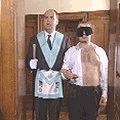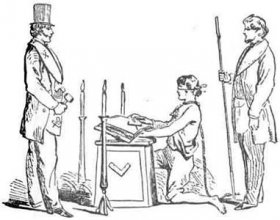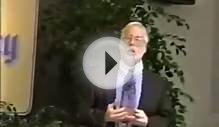
 One of the things people are most curious about is the secrets in Freemasonry. Masons often claim that Freemasonry is not a secret organization, but an organization with secrets. As former Masons, we can assure you that you are not missing much when it comes to what is really considered Masonic secrets, because the only real secrets in Freemasonry are themodes of recognition", which include due guards, signs, tokens (which are the handshakes or secret grips), and passwords. Everything else is pretty much fair game to be revealed.
One of the things people are most curious about is the secrets in Freemasonry. Masons often claim that Freemasonry is not a secret organization, but an organization with secrets. As former Masons, we can assure you that you are not missing much when it comes to what is really considered Masonic secrets, because the only real secrets in Freemasonry are themodes of recognition", which include due guards, signs, tokens (which are the handshakes or secret grips), and passwords. Everything else is pretty much fair game to be revealed.
However, most Masons will refuse to divulge anything and will "forever conceal, and never reveal any of the art or arts, part or parts, point or points of the hidden mysteries of Freemasonry, which they have received, may be about to receive, or may be hereafter be instructed in, to any person unless it shall be to a worthy Brother Mason." This is, in part, the result of the fear so indelibly embedded on one's mind when they enter the lodge for the very first time; being "received on the point of a sharp instrument piercing their naked left breast, which is to teach them that as this is an instrument of torture to the flesh, so should the recollection thereof be to their minds and consciences, should they ever reveal the secrets of Freemasonry unlawfully."
What's more, after taking the bloody oath that reinforces this fear, the candidate is told that "the penalty of their oath (or obligation) is not literal, but instead, symbolic of what an honest man would rather undergo then to violate his solemn vow." Yet, by then it is too late, the fear factor has already been well instilled. So, it turns out to be a "catch-22, " either you fear that some over zealous Mason just might hold you accountable by fulfilling the penalty on behalf of the Craft, or else your pride and honor are at risk of being destroyed. In either case, most Masons choose to take the safest route and keep their mouths shut entirely, rather than risk either consequence.
However, as Ex-Masons for Jesus we fear (reverence) God not man, and therefore we're not obligated to an oath which was rendered to us under false pretenses. As far as we are concern, the oaths which we took are null and void. God has released us from them. Leviticus 5:4-6 makes it clear that when something is hidden from a man (in this case, the fact that the teachings of the lodge violate God's Word) and he takes an oath thoughtlessly, he is guilty of sin. When he recognizes it as sin (which we have) he may be released from it by confessing it as such and claiming the promise found in 1 John 1:8-9; "If we say that we have no sin, we deceive ourselves. If we confess our sins, He is faithful and just to forgive us our sins and to cleanse us from all unrighteousness, " As for the Levitical demand for a sin offering, praise God that He offered His Son, Jesus Christ, as full payment for our sin debt, once and for all!
 The day we made that confession, renounced Masonic teachings, and claimed the promises of God, was the day He set us free from the obligations and deceptions of Freemasonry. While Masons may want us to feel guilty and remain in bondage through obedience to the men of the lodge by not bringing to light what you are about to see, we prefer to be obedient to God, and do not want to leave you in the dark about anything concerning our firsthand knowledge of Freemasonry. Christians are honorable by honoring Jesus and following his example. Unfortunately, Freemasonry doesn't even acknowledge Jesus Christ our Lord.
The day we made that confession, renounced Masonic teachings, and claimed the promises of God, was the day He set us free from the obligations and deceptions of Freemasonry. While Masons may want us to feel guilty and remain in bondage through obedience to the men of the lodge by not bringing to light what you are about to see, we prefer to be obedient to God, and do not want to leave you in the dark about anything concerning our firsthand knowledge of Freemasonry. Christians are honorable by honoring Jesus and following his example. Unfortunately, Freemasonry doesn't even acknowledge Jesus Christ our Lord.
While Masonic Rituals and Modes of Recognitions vary slightly from one jurisdiction to another, they are all true to "due and ancient form" in every duly constituted regular lodge. This means that the variation in wording found in one ritual when compared to another may be minor, yet in essence you will find that they all basically say the same thing. The same holds true for Modes of Recognition. Masons can recognize these signs even if their own jurisdiction performs them slightly differently. Click on the following image, which is a link to Duncan's Masonic Ritual and Monitor by Malcolm C. Duncan, 1866.
YOU MIGHT ALSO LIKE











